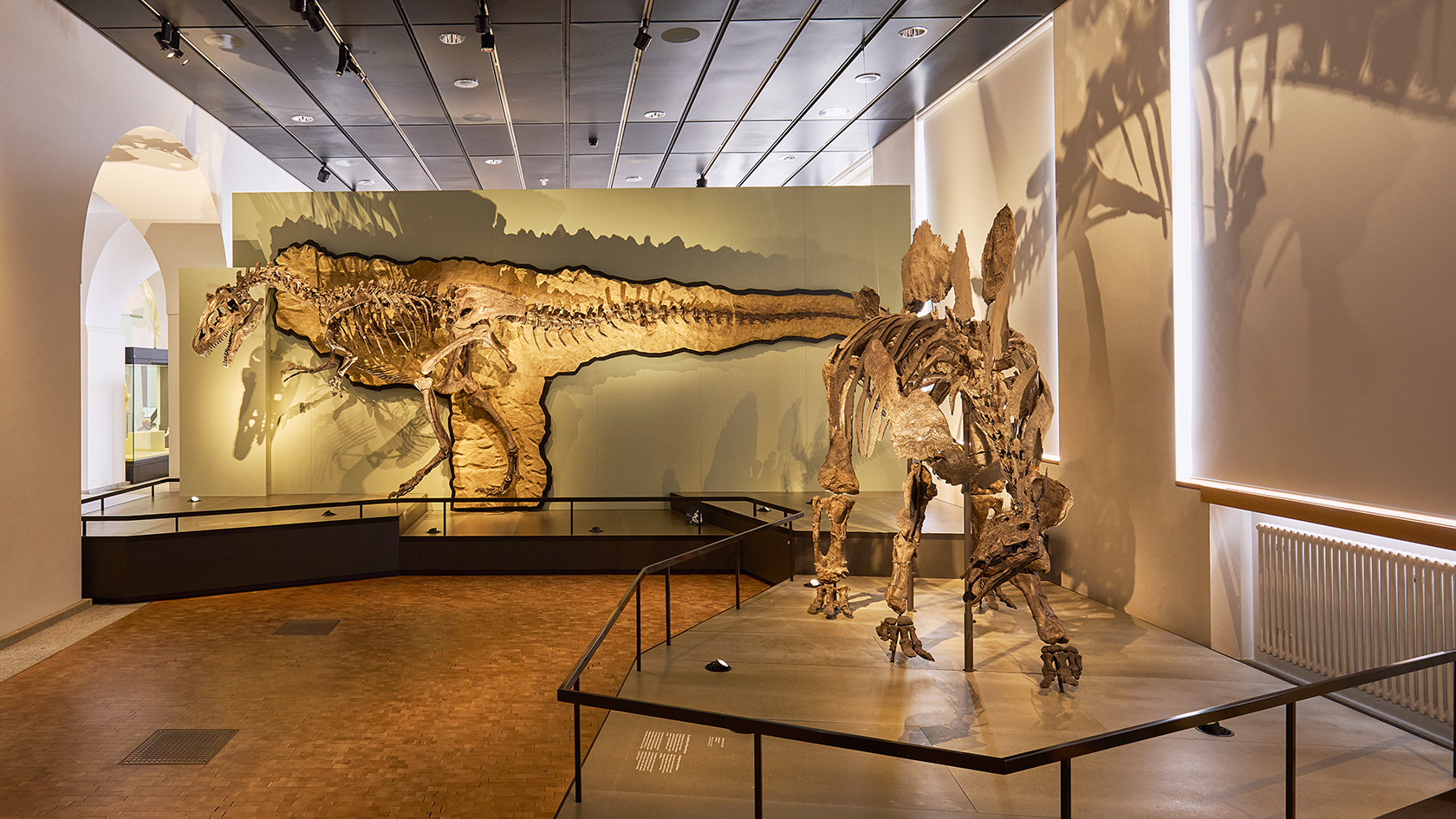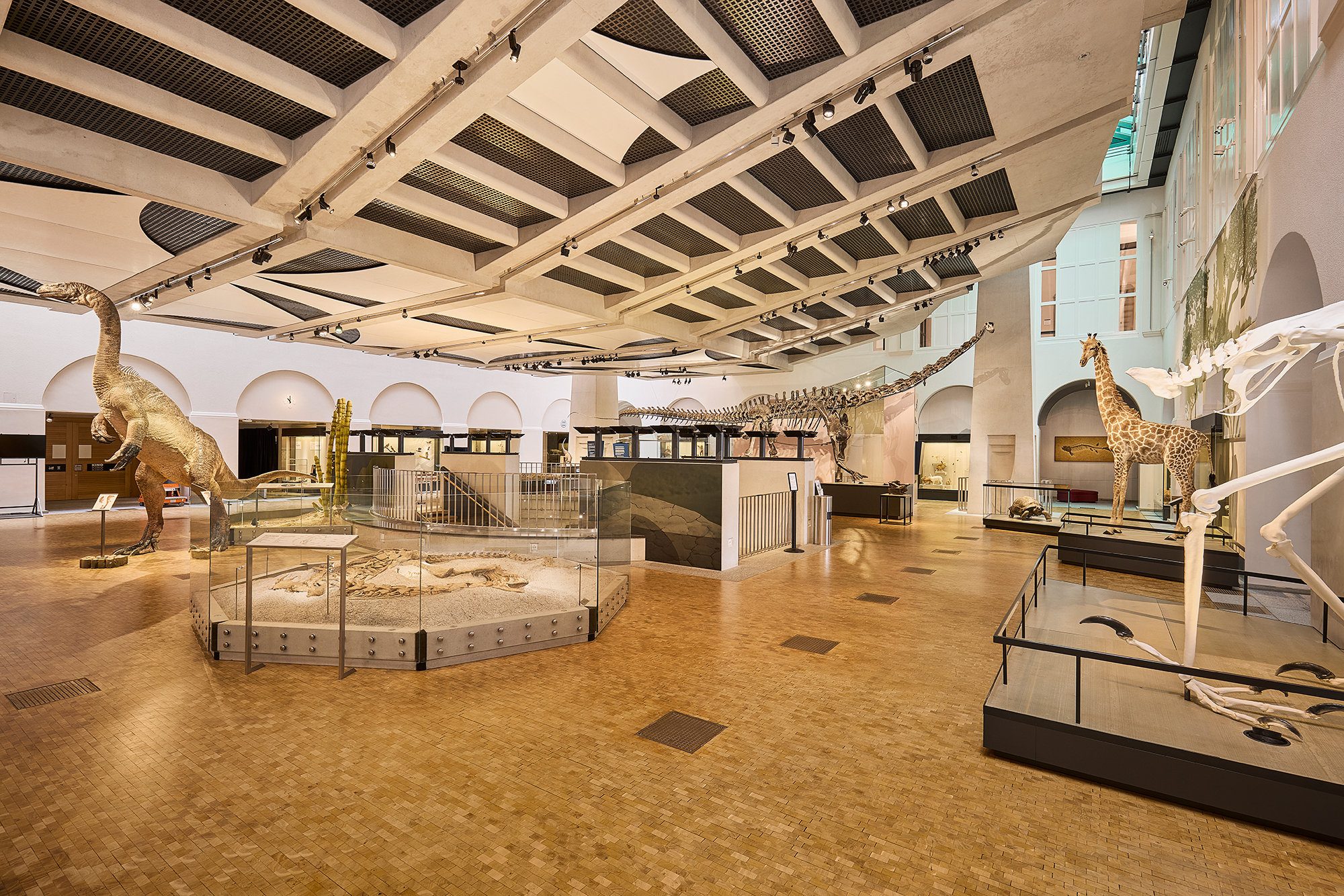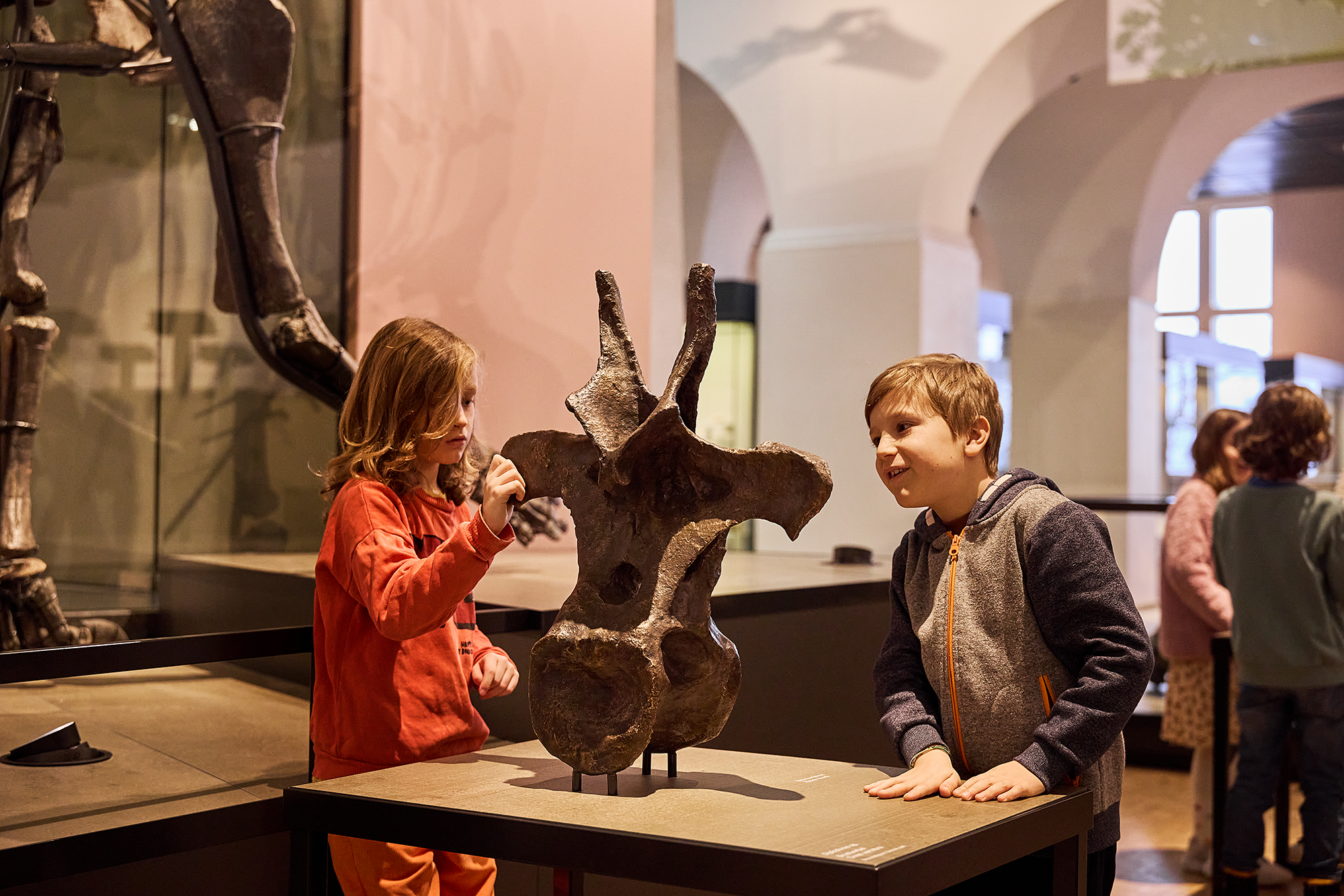Navigation auf uzh.ch
Navigation auf uzh.ch

The University of Zurich (UZH) is merging its four natural sciences museums – the Zoological Museum, the Paleontological Museum, the Museum of Anthropology and the Botanical Museum – into the Natural History Museum (NMZ). To mark its opening on 18 March 2024, the museum is bringing together zoological and paleontological elements and adding new and impressive exhibits. The museum on Karl-Schmid-Strasse will then incorporate anthropological topics before rounding off its permanent exhibition with exhibits from the world of botany.
“With our Natural History Museum, we want to bring natural sciences research to life under one roof and get people excited about nature in all its beauty and diversity,” says Stephan Neuhauss, Vice Dean of Research at the Faculty of Science. “We want our visitors to understand the significance of evolution and biodiversity and how dynamically life on our planet is evolving.”

The main draw of the revamped permanent exhibition is four dinosaurs, which were gifted to UZH by the Aathal Dinosaur Museum in 2019. A mighty Diplodocus measuring 17 meters, a giraffe and a giant tortoise represent the long-necked herbivores. Four bronze vertebrae, positioned in front of the skeleton and accompanied by Braille text, provide visitors, including those with a visual impairment, with a hands-on experience of the sheer size of this prehistoric giant. In addition, three life-like models – from an egg hatching to a year-old dinosaur – illustrate the remarkable speed at which these creatures grew.
Two other large dinosaurs, an Allosaurus and the stegosaur Hesperosaurus, stand opposite one another as predator and prey. The bones of these large dinosaurs were more robust, meaning they were more likely to fossilize and be discovered in excavations. However, the Mesozoic era also featured numerous smaller dinosaurs. They are represented in the Natural History Museum by a Nanosaurus of about two meters in length, both as a skeleton and as a model.
A number of small feathered predatory dinosaurs survived the mass extinction of 66 million years ago, evolving into creatures of various shapes and colors. Today, more than 11,000 species of these descendants of dinosaurs have spread out across the planet – we know them as birds. An oversized magpie skeleton (also a new addition) in the new museum is emblematic of this remarkable evolutionary development.
Unlike dinosaurs, which either evolved or became extinct, many insects have hardly changed at all in appearance or behavior over the millennia. They are the true high-flyers of Earth’s history. The new museum features large and colorful models of four different insects – a dragonfly, a mosquito, a cicada and a ground beetle – for visitors to marvel at.

In addition to the four dinosaur skeletons originally unearthed in the US, the Natural History Museum is also home to an Ichthyosaurus from the Middle Jurassic period in Switzerland. The local fish dinosaur, which dates from around 169 million years ago and may have measured up to seven meters, was dug up by UZH researchers in the canton of Aargau and then prepared. It is the largest and most complete fish dinosaur fossil in the world.
“The Natural History Museum brings natural sciences research to life and uses simple yet precise terms to show how new insights are gained in science,” says UZH President Michael Schaepman. To make the museum as inclusive as possible, the texts displayed in the museum were kept simple and easy to understand. “We want to reach people of all ages and introduce them to natural science topics. Our Natural History Museum is a new place to experience the world of natural sciences for visitors from Zurich, Switzerland and abroad,” says Schaepman.